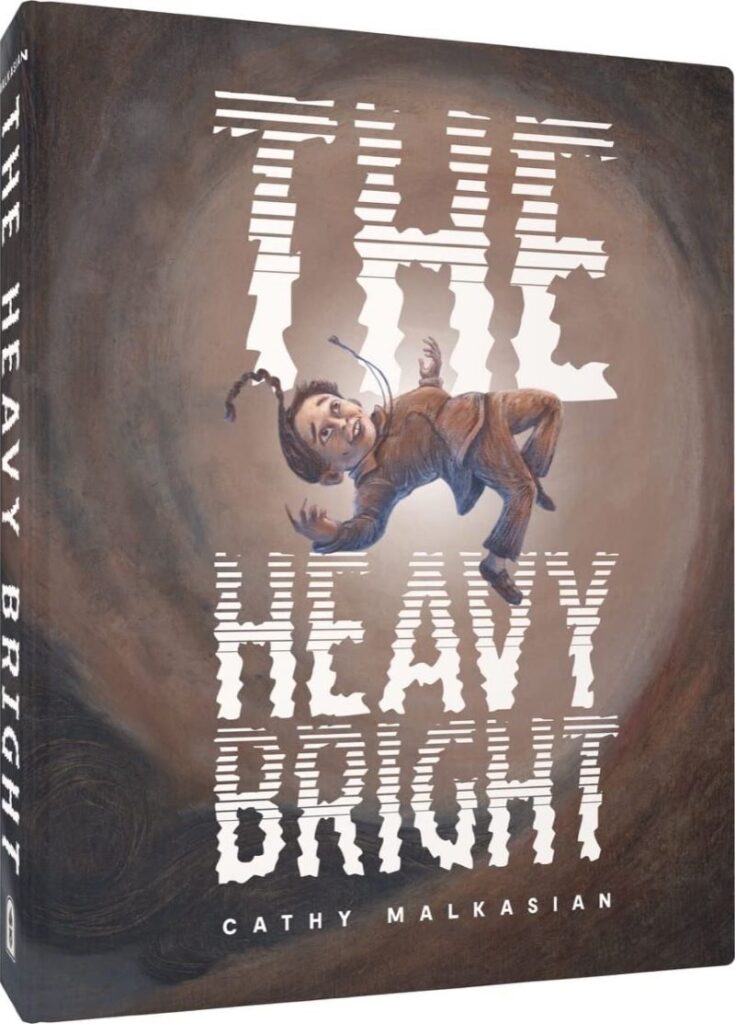
A young girl is tasked with a seemingly impossible quest: to hunt down and destroy 999 black eggs closely held by evil men across the land. She’s the only apparent candidate because she’s immune to the power of the eggs, which otherwise cause common people to go crazy with deadly rage. Thirty years later, she finally nears completion of her life’s work, if only she can find the pesky last few eggs.
Cathy Malkasian’s latest graphic novel pulls us into her world from the very first splash page, revealing a moody forest populated by naked male commanders and a bird lady. From that mysterious intro, we gradually learn that the evil soldiers have passed beyond the living world into a sort of genderless purgatory, placed there because their physical forms died when their “heavy” black eggs were converted into “bright” light.
Although the bird lady was the first to successfully convert the 1000th egg to light, she doesn’t have the ability to hunt down the rest, which is where our heroine comes into play. Arna is just a tween when she loses her father due to the effects of the eggs, setting her on her retaliatory path of egg destruction. Along the way, she meets and falls in love with a fellow tween girl named Sela, and also learns to disguise herself as a man to avoid gender discrimination and ease her hunt.
Malkasian’s writing has taken a leap forward with this epic 334-page book. While she has always delighted in spinning tales about strange characters in even stranger lands, dating back to the first Percy Gloom graphic novel in 2007, there’s previously been a dreamy, stream-of-consciousness feel to her stories that has been honed here to a clearly executed plot and sharply pointed social commentary. She describes her books as “poignant allegories”, but her narrative is so direct this time that you can practically feel her seething rage at the patriarchy boiling off the page, surely her response to the stupidity of the Trump era. All commanders are narrow-minded saber-rattlers who view young females as valuable commodities but completely discount and dispose of mature ladies. Among her related targets are religious zealots, warmongers, incels, and even bad girl comics, all sharing in common their objectification of women. It’s poignant, moving work, all the more so thanks to her lovely art.
Working in full color this time, she utilizes her described “soft pencil and lush watercolor” to fully explore both the physical world and the afterlife. Her color spectrum maintains a somber tone throughout, matching the dreary desolation of the real world and the hopeless morass of the afterlife. And yet, there’s beauty to be found in the bleakness. Arna and Sela’s romance leads to a moment that is both shocking and heartbreaking, gorgeously portrayed as a powerful beam of sunlight piercing heavy cloud cover to illuminate a newly formed tree stump. A towering men’s resort looks like architecture from Spirited Away buried in glitzy Vegas lights. Elsewhere, touches of Tolkien’s Middle Earth illustrations creep into lovely landscape renderings of forests, rivers, and islands.
The book is unlikely to find its way into any Florida school libraries due to questionable content including the tween lesbian romance, depictions of their “budding blood”, and gender confusion by a different cross-dressing girl. Don’t let the narrow-minded stop you; this is a monumental, important work stuffed with fascinating characters and themes all thoroughly brought to life through Malkasian’s masterful writing and dreamy artwork. There’s plenty to unpack and appreciate here, with a story and images that linger in memory well after the book’s conclusion. I’ve greatly enjoyed all of Malkasian’s previous whimsical books, but this is the first one that really feels like it matters. She has elevated her work above mere fantasy to a dire warning about our heavy times, suffused with hope for a brighter future.